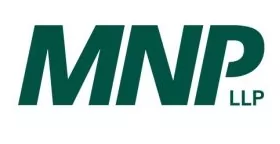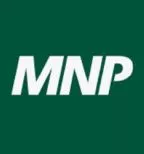- with readers working within the Banking & Credit industries
Many First Nations communities across Canada are taking a
longer-term, more strategic approach to economic development. To
form an effective strategy for fostering economic growth, a
community must first understand its starting point.
For many First Nation Economic Development Officers (EDOs), the
first question they need to answer to guide economic development
activities is "How big is our local economy?" The second
question is "How much of our income is being spent outside the
community?"
An economic leakage study can help answer both of these
questions.
What Is an Economic Leakage Study?
An economic leakage study quantifies the level and type of spending that occurs outside the geographic boundaries of a specific community by its residents. Leakage refers to money that "leaks out" of the local economy through expenditures on goods and services.
Economic Leakage Studies Help First Nations Develop Their Local Economies
Why is it important for First Nations to pay attention to
leakage? There are several reasons, but first among them is that
First Nations can become job creators and more economically
self-sufficient if they consider business opportunities in their
own backyard.
Many First Nations are dependent on government transfer and program
dollars; for example, a leakage study we completed for Akwesasne First
Nation (see more details below) found that roughly 60% of the
community's income was from government sources. First Nation
leaders have recognized this as a problem and are focused on
developing their own local economies in order to reduce their
dependency on external governments. Data collected through an
economic leakage study can be used to support economic development
planning with the goal of achieving greater self-sufficiency.
Case Study: Akwesasne First Nation
Earlier this year, MNP Consulting's Economics & Research
team completed an economic leakage study for the Mohawk Council of
Akwesasne, a First Nation on the border between Ontario and Quebec.
Similar studies by the Mohawks of Kahnawake in Quebec, Six Nations
and New Credit First Nations in Ontario and the Unama'ki
Economic Benefit Office in Nova Scotia provided useful comparative
data.
The leakage study for Akwesasne revealed three important pieces of
data:
- The estimated value of economic activity generated by households, businesses and local government
- The percentage of economic activity that was spent on and off reserve (estimate of leakage)
- The specific spending patterns of households, businesses and local government
Economic Activity
Based on our research findings, we were able to get a dollar estimate of the total economic activity generated by the Canadian portion of Akwesasne. We were also able to verify the number by comparing it to other First Nation communities of similar size.
Economic Leakage
The Akwesasne research study found that approximately 76% of income was spent outside the community. This is consistent with the findings of other leakage studies in Ontario; for example, the Mohawks of Kahnawake reported 69% leakage and Six Nations and New Credit reported 62.2% leakage.
Spending Patterns
Our analysis of the spending patterns of households, businesses and local governments allowed us to estimate how much is spent on specific categories such as food, shelter, transportation, health care, housing, clothing and entertainment. Akwesasne can now use this data to inform decisions on what strategies or business opportunities to pursue.
What Can Be Done with Economic Leakage Data?
A First Nation can use the results of an economic leakage study to identify opportunities to increase economic activity within a community and recapture some of the economic leakage.
Increase Economic Activity
To increase economic activity, a First Nation could support the creation of businesses that provide goods and services to customers outside of their territory based on the strengths or relationships identified in the economic leakage study. One strategy that Akwesasne is considering is to establish strategic partnerships with nearby municipalities to attract more business activity to the region, including Akwesasne.
Recapture Leakage
To recapture leakage, a First Nation could look closely at specific market segments to determine which economic areas have the greatest potential for recapture of economic leakage. The Akwesasne study concluded that there were specific opportunities to recapture spending in the categories of food and beverage and repairs and maintenance. As a result, Akwesasne is considering strategies to promote more business growth in these two areas.
Getting Started with an Economic Leakage Study
If you're interested in conducting an economic leakage study for your community, a good place to start is to look at similar studies that have been done by other First Nations, to help identify examples and best practices. Ideally, your actual study should be conducted by a professional or firm that has experience in this type of unique study. Ensure your chosen study leader will tailor the research methodology to your specific community.
The content of this article is intended to provide a general guide to the subject matter. Specialist advice should be sought about your specific circumstances.


